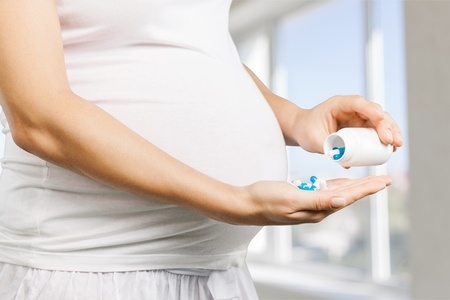Celexa

Celexa is a popular antidepressant marketed by Forest Laboratories. However, some research has linked this and other SSRIs (selective serotonin reuptake inhibitors) to birth defects and autism when used by expectant mothers.
What is Celexa Used For?
Celexa (citalopram) is currently indicated to treat depression. However, it is also sometimes used off-label for the treatment of obsessive compulsive disorder, panic disorder, premenstrual dysphoric syndrome (PMDD), anxiety disorder, and post-traumatic stress disorder. The drug works by increasing the amount of serotonin in the brain. This neurotransmitter is thought to impact mood.
The U.S. Food & Drug Administration (FDA) approved Celexa in 1988. In 2011, approximately 31.5 million prescriptions were dispensed for citalopram in the U.S. About 7.2 million U.S. patients were prescribed the drug that year.
Celexa Side Effects
Celexa side effects may include:
- Drowsiness
- Nausea
- Insomnia,
- Xerostomia
- Diaphoresis
- Diarrhea
- Ejaculatory disorder
- Anxiety
- Tremor
- Vomiting
Celexa Safety Alerts
- 2006: The FDA warned that the use of SSRI antidepressants in conjunction with certain migraine medications called Triptans may result in a dangerous increase in the brain’s serotonin levels, known as serotonin syndrome.
- 2006: The FDA issued a warning regarding a possible association between SSRI antidepressants and persistent pulmonary hypertension of the newborn (PPHN). However, the agency modified its stance in 2011 due to conflicting findings.
- 2007: The labels for SSRIs include a Black Box Warning regarding a potential association with suicidal thoughts in children, adolescents and young adults.
- 2011: The FDA warned that high doses of Celexa could be associated with changes in the electrical activity of the heart (QT interval prolongation),which can lead to a dangerous abnormal heart rhythm called Torsade de Pointes. The agency advised that the drug should no longer be used at doses greater than 40 mg per day.
- 2012: The FDA again revised the Celexa label to include new warnings about the potential for QT interval prolongation and Torsade de Pointes, as well as new drug dosage and usage recommendations.
Celexa and Birth Defects
Some research has suggested that SSRI antidepressants like Celexa can increase the risk of certain birth defects when used during pregnancy. Heart defects, specifically atrial septal defects or ventricular septal defects, where among the most common abnormalities found. The drugs have also been associated with an abdominal wall birth defect called Omphalocele, as well as a skull defect called Craniosynostosis.
A recent study also found that children exposed to SSRIs during the last two trimesters of pregnancy were 117% more likely to be diagnosed with autism spectrum disorder.
Celexa Settlement
In 2014, Forest Labs agreed to pay between $7.7 and $10.4 million to Lexapro and Celexa class action lawsuit plaintiffs who had accused the company of illegally marketing the SSRI antidepressants for use in children. Those eligible to participate in the settlement included Missouri residents who purchased Celexa for a patient under the age of 18 between January 1, 1998, and December 31, 2013, or purchased Lexapro for a minor between August 1, 2002, and December 31, 2013. (In re: Celexa and Lexapro Marketing and Sales Practices Litigation, Case No. 1:09-md-02067, U.S. District Court, District of Massachusetts)
- FDA (2013) “Celexa Label” http://www.accessdata.fda.gov/drugsatfda_docs/label/2014/020822Orig1s046lbl.pdf
- FDA (2006) “Information for Healthcare Professionals: Selective Serotonin Reuptake Inhibitors (SSRIs), Selective Serotonin-Norepinephrine Reuptake Inhibitors (SNRIs), 5-Hydroxytryptamine Receptor Agonists” (Triptans)http://www.fda.gov/Drugs/DrugSafety/PostmarketDrugSafetyInformationforPatientsandProviders/DrugSafetyInformationforHeathcareProfessionals/ucm085845.htm
- FDA (2006) “FDA Public Health Advisory: Treatment Challenges of Depression in Pregnancy and the Possibility of Persistent Pulmonary Hypertension in Newborns.” http://www.fda.gov/Drugs/DrugSafety/PostmarketDrugSafetyInformationforPatientsandProviders/ucm124348.htm
- FDA (2007) “FDA Drug Safety Communication: Antidepressant Use in Children, Adolescents, and Adults.” http://www.fda.gov/Drugs/DrugSafety/InformationbyDrugClass/ucm096273.htm
- FDA (2011) “FDA Drug Safety Communication: Abnormal heart rhythms associated with high doses of Celexa (citalopram hydrobromide” http://www.fda.gov/Drugs/DrugSafety/ucm269086.htm
- FDA (2012) “FDA Drug Safety Communication: Revised recommendations for Celexa (citalopram hydrobromide) related to a potential risk of abnormal heart rhythms with high doses” http://www.fda.gov/Drugs/DrugSafety/ucm297391.htm
- MedPage Today (2011) “More Evidence SSRIs in Pregnancy Boost Birth Defect Risk” http://www.medscape.com/viewarticle/745430
- NEJM (2007) “Use of Selective Serotonin-Reuptake Inhibitors in Pregnancy and the Risk of Birth Defects” http://www.nejm.org/doi/full/10.1056/NEJMoa066584
- JAMA Pediatrics (2016) “Antidepressant Use During Pregnancy and the Risk of Autism Spectrum Disorder in Children” http://archpedi.jamanetwork.com/article.aspx?articleid=2476187
Get the latest news and litigation updates about this case by following us on Facebook. Click the "Like" button below.
Follow Us


